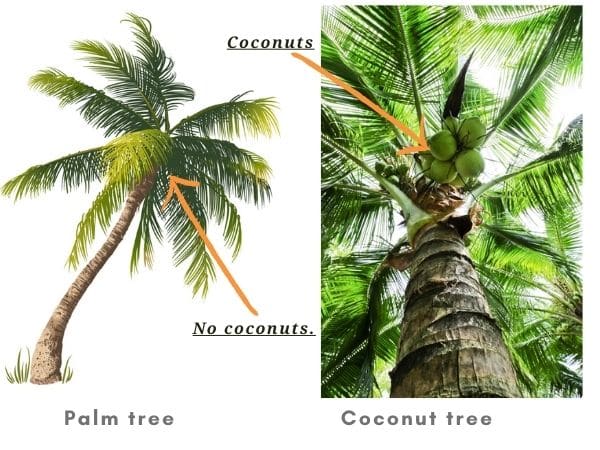Homemade Palm Tree Fertilizer- Ingredients + Recipes
Palm trees are prone to nutrient deficiencies and require proper feeding to grow healthy. Determining how much nutrients your plant needs is, therefore, vital. But using synthetic fertilizers is not always the best thing to do, which means you can also make your own at home.
I have mentioned the significance of nutrients in palm trees, recommended ideal organic recipes for preparing its fertilizers, and created some great homemade palm tree fertilizers to try with simple ingredients found at home.
What nutrients do palm trees need?
A healthy palm tree needs a consistent diet containing nutrients and micronutrients. Since these plants grow on nutrient-deficient soils like sand, feeding them with fertilizers containing magnesium, potassium, nitrogen, iron, and Manganese is essential. Let’s go into detail about how each nutrient plays its part to keep your plant healthy:
Nitrogen
Of all the minerals a palm tree requires, nitrogen makes up about 3-4% of the plant’s structure. Your plant cannot grow into a healthy adult without it. Part of its job is to help the plant manufacture amino acids which synthesize proteins. It is one of the most significant ingredients of chlorophyll, and its contribution to the photosynthesis process is immeasurable.
Potassium (K)
Potassium is a micronutrient that plays various roles in palm trees, but it is predominantly known for influencing the transportation of essential sugars, carbohydrates, and water through the plant. It also promotes the activation of enzymes, leading to the formation of carbs, protein, and energy. In addition, it accelerates the rate of photosynthesis.
Iron (Fe)
Iron is an essential micronutrient that a palm tree needs to synthesize DNA, respiration, and photosynthesis. Chlorophyll production, maintaining color, oxygen transportation, synthesizing proteins, and forming structural components are all essential functions that iron performs in the plant. Without it, the tree may develop iron chlorosis.
Manganese (Mn)
A palm tree relies on a micronutrient known as Manganese for growth and development and other metabolic functions. When digested in the correct quantity, Manganese aids in metabolizing nitrogen and photosynthesis. While Mn toxicity is common in palm trees growing in poorly drained or acidic soils, these plants have developed uptake and storage mechanisms to fight off chlorosis.
Magnesium (Mg)
Magnesium is responsible for the formation of the green-coloring matter on palm leaves. Without it, the tree’s ability to produce food gets compromised, leading to stunted growth, yellowing leaves, and unusually-looking veins. this micronutrient also aids in enzymes activation, influencing the plant’s steady development and metabolism.
Homemade fertilizer for palm trees (recipes)
Sand drains off the water pretty fast, preventing the palm tree from receiving its vital nutrients. So, if you intend to use liquid fertilizer, chances are your tree might not benefit from the nutrients as expected. It’s, therefore, best to prepare your homemade fertilizer in a way that allows the roots to soak up and utilize the essential nutrients. Ensure the ingredients you use support the slow-release formula.
Here are some homemade recipes you can try when preparing your slow-release fertilizer:
Soybean meal + bat guano + cottonseed meal
Now that using plant nutrients is your primary goal, it would be best to get something in your kitchen pantry as long as it contains essential minerals. You can use soybean meal, bat guano, or cottonseed meal to increase soil nitrogen.
Next, get organic kitchen wastes like whole grains, kelp, and green leafy vegetable. If you can get orange peels that are also rich in iron, go for it. Mix them all up in a bowl and let it sit for about an hour.
Bone meal + kelp meal fertilizer recipe
Get seed meal, dolomite lime, bone meal, kelp meal, and used tea leaves. Only the seed meal should be in five cups, while the rest in one cup. You can prepare this organic fertilizer in many portions as you can because it can last up to 24 months. Mix it for 30-60 minutes. To prevent it from drying out, add a concoction of black coffee.
These ingredients contain nitrogen, potash, and phosphorus. Besides saving on cost, this method helps preserve the environment and promote healthy growth for your palm trees.
Eggshells + vegetables fertilizer
You’ll need kitchen leftovers for this recipe, preferably wet green leafy vegetables, a liter of water, eggshells, and a tablespoon of Epsom salt. Put the mixture in a gardening bowl and mix for about 30 minutes. You’re using Epsom salt instead of your regular salt because it is formulated with magnesium and sulfate.
Eggshells are rich in calcium and potassium. But if you can get milk, the better for your plant. It’s the best way to provide it with nitrogen-building protein. This mixture is not only inexpensive but also easy to prepare. This gives you significant leverage to avoid processed fertilizers.
What is the best natural fertilizer for palm trees?
The best organic fertilizer for palm trees should contain all the micronutrients or minerals necessary to grow and develop. Because palm trees come in more than 1500 species, deciding which organic fertilizer is best can be challenging.
To know which nutrients your plant requires the most, check out the type of soil it’s growing on, your climate, and if it’s suffering from any deficiencies.
When choosing a natural fertilizer recipe for your indoor or outdoor palm plant, you want to ensure the ingredients comply with a slow-release formula. Suppose you’re still green about fertilizer application and want to try out home-based recipes for the first time. How sure are you that your mixes will provide the necessary nutrients your tree needs? In that case, all you can do is hope that the recipe you choose addresses any nutritional deficiencies your plant is suffering from.
For example, if your palm tree shows symptoms of potassium deficiency, you can try out the second recipe. It contains Epsom salt, which is rich in potassium. However, you need to realize that Epsom contains extra potassium, which can be toxic to a plant that isn’t potassium-deficient.
Another point to note is applying too many fertilizers can lead to leaf burns and compromise plant growth. If you are unsure about much fertilizer your need, it’s best to apply minimum amounts to avoid irreversible damage.
Make sure you use clean gardening tools to protect your plant against toxins. Once in a while, perform a salt test to determine if your plant is getting the right amount.
If your area has sandy soil and experiences too much rainfall, administer fertilization 3 to 4 times a year. The best time to do it is at the beginning of spring when it needs many nutrients and during the fall.
Ensure you apply fertilizer to wet soil and wash out the soil once you’re through. Finally, if a specific fertilizer combination doesn’t work, try another one until you get the desired results.


![Palm Tree Roots – How Deep Do They Grow? [Facts]](https://gardenine.com/wp-content/uploads/2021/03/Palm-tree-root-system-diagram.jpg)


